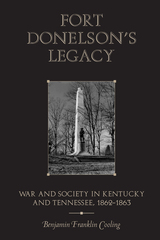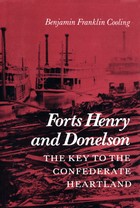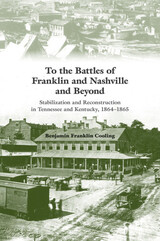
While many associate the concept commonly referred to as the “military-industrial complex” with President Dwight D. Eisenhower’s 1961 farewell address, the roots of it existed two hundred years earlier. This concept, as Benjamin Franklin Cooling writes, was “part of historical lore” as a burgeoning American nation discovered the inextricable relationship between arms and the State. In Arming America through the Centuries, Cooling examines the origins and development of the military-industrial complex (MIC) over the course of American history. He argues that the evolution of America’s military-industrial-business-political experience is the basis for a contemporary American Sparta. Cooling explores the influence of industry on security, the increasing prevalence of outsourcing, ever-present economic and political influence, and the evolving nature of modern warfare. He connects the budding military-industrial relations of the colonial era and Industrial Revolution to their formal interdependence during the Cold War down to the present-day resurrection of Great Power competition. Across eight chronological chapters, Cooling weaves together threads of industry, finance, privatization, appropriations, and technology to create a rich historical tapestry of US national defense in one comprehensive volume.
Integrating information from both recent works as well as canonical, older sources, Cooling’s ambitious single-volume synthesis is a uniquely accessible and illuminating survey not only for scholars and policymakers but for students and general readers as well.

Cooling compellingly describes a struggle that was marked not only by the movement of armies and the strategies of generals but also by the rise of guerrilla bands and civil resistance. It was, in part, a war fought for geography—for rivers and railroads and for strategic cities such as Nashville, Louisville, and Chattanooga. But it was also a war for the hearts and minds of the populace. "Stubborn civilian opposition to Union invaders," Cooling writes, "prompted oppressive military occupation, subversion of civil liberties, and confiscation of personal property in the name of allegiance to the United States—or to the Confederacy, for that matter, since some Unionist southerners resented Confederate intrusion fully as much as their secessionist neighbors opposed Yankee government."
In exploring the complex terrain of "total war" that steadily engulfed Tennessee and Kentucky, Cooling draws on a huge array of sources, including official military records and countless diaries and memoirs. He makes considerable use of the words of participants to capture the attitudes and concerns of those on both sides. The result is a masterful addition to Civil War literature that integrates the military, social, political, and economic aspects of the conflict into a large and endlessly fascinating picture.


Amid an air of stalemate, the Confederates planned a bold move to strike at Washington, DC and capture or scatter Lincoln and his cabinet. In command of the operation was the colorful and unpredictable Jubal “Old Jube” Anderson Early, brought in to replace the fallen Stonewall Jackson. Less well known than the bloodier Antietam and Gettysburg, Early's campaign, Cooling argues, had greater significance.
In addition to the persnickety bachelor Anderson, this account introduces many colorful participants, including railroad president John W. Garrett, the politically influential Blair family, and Elizabeth “Aunt Betty” Thomas, a free Black woman, who was said to have saved Lincoln’s life by shouting at him: “Get down, you fool!” when he came under fire at Fort Stevens. Exciting and comprehensive, Civil War scholars and readers will delight in this masterful account.

“Benjamin Franklin Cooling has produced a triumphant third volume to his definitive study of Tennessee and Kentucky in the Civil War. Like his first two volumes, this one perfectly integrates the home front and battlefield, demonstrating that civilians were continually embroiled in the war in intense ways comparable to and often surpassing the violence experienced by soldiers on the battlefield. The impacts of armies, guerrillas, and other military forces on civilians was continual, terrifying, and brutal in nearly all parts of the Confederacy’s Heartland.” —T. Michael Parrish, Linden G. Bowers Professor of American History, Baylor University
“Cooling’s scholarship is indeed sound and based on extensive research in a variety of original sources that range from manuscript collections to newspapers, with an exhaustive list of secondary sources. His work represents the first new interpretations of this important part of the war in decades.” —Archie P. McDonald, Regent’s Professor and Community Liaison, Stephen F. Austin State University
In two preceding volumes, Forts Henry and Donelson and Fort Donelson’s Legacy, Benjamin Franklin Cooling offered a sweeping portrayal of war and society in the upper southern heartland of Kentucky and Tennessee during the first two and a half years of the Civil War. This book continues that saga as Cooling probes the profound turmoil—on the battlefield, on the home front, within the shadow areas where lawlessness reigned—that defined the war in the region as it ground to its close.
By 1864 neither the Union’s survival nor the South’s independence was any more apparent than at the beginning of the war. The grand strategies of both sides were still evolving, and Tennessee and Kentucky were often at the cusp of that work. With his customary command of myriad sources, Cooling examines the heartland conflict in all its aspects: the Confederate cavalry raids and Union counteroffensives; the harsh and punitive Reconstruction policies that were met with banditry and brutal guerrilla actions; the disparate political, economic, and sociocultural upheavals; the ever-growing war weariness of the divided populations; and the climactic battles of Franklin and Nashville that ended the Confederacy’s hopes in the Western Theater. Especially notable in this volume is Cooling’s use of the latest concepts of “hybrid” or “compound war” that national security experts have applied to the twenty-first-century wars in Iraq and Afghanistan—a mode of analysis that explores how catastrophic terrorism and disruptive lawlessness mix with traditional combat and irregular operations to form a new kind of warfare. Not only are such concepts relevant to the historical study of the Civil War in the heartland, Cooling suggests, but by the same token, their illumination of historical events can only enrich the ways in which policymakers view present-day conflicts.
In chronicling Tennessee and Kentucky’s final rite of passage from war to peace, To the Battles of Franklin and Nashville and Beyond is in every way a major contribution to Civil War literature by a masterful historian.
READERS
Browse our collection.
PUBLISHERS
See BiblioVault's publisher services.
STUDENT SERVICES
Files for college accessibility offices.
UChicago Accessibility Resources
home | accessibility | search | about | contact us
BiblioVault ® 2001 - 2024
The University of Chicago Press









